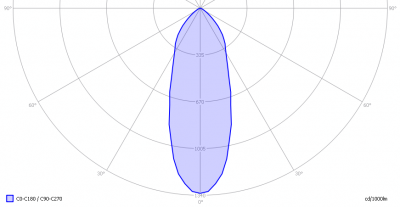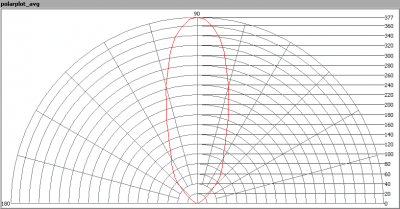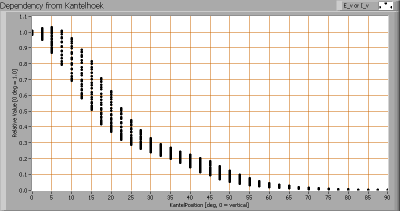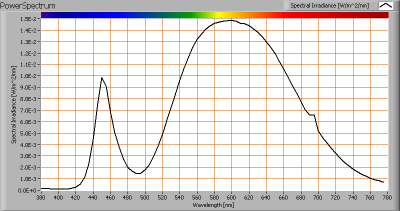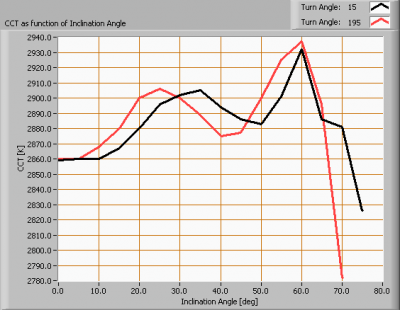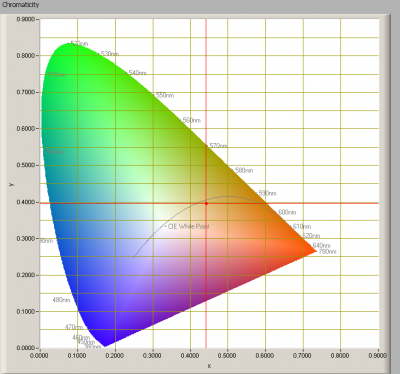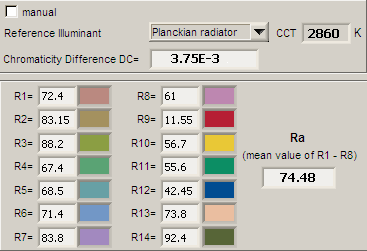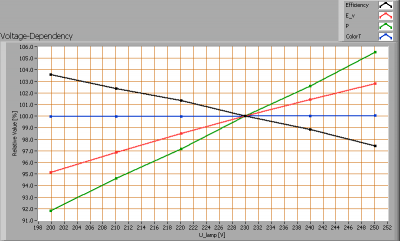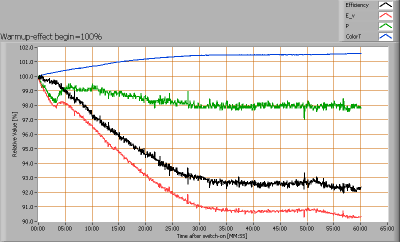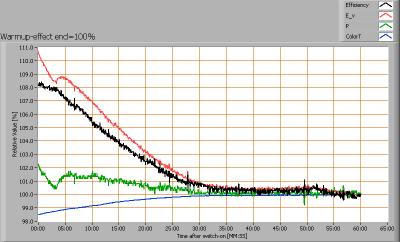Line Lite International BV P7 series VS SHARP 7.6W
Posted by Marcel van der Steen in Led lights, Light measurements No Comments»Line Lite International BV offers a 230 V led light with a nice heat sink integrated in the luminaire. It is a replacement for existing light bulbs with an E27 fitting. Also an Eulumdat file is added in this article.
See this overview for a comparison with other light bulbs.
Summary measurement data
| parameter | meas. result | remark |
|---|---|---|
| Color temperature | 2860 K | Warm white |
| Luminous intensity Iv | 379 Cd | |
| Beam angle | 39 deg | |
| Power P | 7.6 W | |
| Power Factor | 0.53 | For every 1 kWh net power consumed, there has been 1.6 kVAhr for reactive power. |
| Luminous flux | 284 lm | |
| Luminous efficacy | 38 lm/W | |
| CRI_Ra | 74 | Color Rendering Index. |
| Coordinates chromaticity diagram | x=0.4412 and y=0.3960 | |
| Fitting | E27 | |
| D x H external dimensions | 73 x 102 mm | External dimensions of the light bulb. |
| Diameter luminous area | 42 mm | Dimensions of the luminous area (used in Eulumdat file). This is the area just around the leds. |
| General remarks | The ambient temperature during the whole set of measurements was 22.5 – 26.5 deg C.
Warm up effect: the illuminance drops about 10 % due to the warming up of the led. Voltage dependency: consumed power and illuminance are linearly dependent from the light bulb voltage. Note: according to the supplier, these light bulbs have the Kema Keur label. The Eulumdat file can be found via this link. |
|
| Measurement report (PDF) |
Eulumdat light diagram
An interesting graph is the light diagram, indicating the intensity in the C0-C180 and the C90-C270 plane. This light diagram below comes from the program Qlumedit, that extracts these diagrams from an Eulumdat file.
The light diagram giving the radiation pattern.
It indicates the luminous intensity around the light bulb. This light diagram is symmetrical around the z-axis.
The unit is Cd/1000lm, meaning the intensity in Cd assuming there would be 1000 lumen in the measured light bulb. This enables comparing different types of light bulbs.
Illuminance Ev at 1 m distance, or luminous intensity Iv
Herewith the plot of the averaged luminous intensity Iv as a function of the inclination angle with the light bulb.
The radiation pattern of the light bulb.
This radiation pattern is the same as the one given earlier. This is because in this light spot’s case, the radiation pattern is symmetric around the z-axis, meaning that the averaged pattern given here is the same as the extraction of the Eulumdat file.
These averaged values are used (later) to compute the lumen output.
Intensity data of every measured turn angle at each inclination angle.
This plot shows per inclination angle the intensity measurement results for each turn angle at that inclination angle. So at 20 degrees inclination angle, all the measurement results of illuminance for all measured turn angles are in the range of 36-63 % of the illuminance value at 0 degrees inclination angle.
When using the average values per inclination angle, the beam angle can be computed, being 39 degrees.
Luminous flux
With the averaged illuminance data at 1 m distance, taken from the graph showing the averaged radiation pattern, it is possible to compute the luminous flux.
The result of this computation for this light spot is a luminous flux of 284 lm.
Luminous efficacy
The luminous flux being 284 lm, and the power of the lightbulb being 7.6 W, yields a luminous efficacy of 38 lm/W.
A power factor of 0.53 means that for every 1 kWh net power consumed, a reactive component of 1.6 kVAr was needed.
| Light bulb voltage | 230 V |
| Light bulb current | 63 mA |
| Power P | 7.6 W |
| Apparent power S | 14.4 VA |
| Power factor | 0.53 |
Color temperature and Spectral power distribution
The spectral power distribution of this light bulb.
The measured color temperature is about 2850 K which is warm white.
This color temperature is measured straight underneath the light bulb. Below a graph showing the color temperature for different inclination angles.
Color temperature as a function of inclination angle.
The maximum value of inclination angle is 70 degrees. Beyond that value there is virtually no intensity anymore. The color temperature first remains constant and then decreases sharply to about 4 % less than its value at 0 degrees.
Chromaticity diagram
The chromaticity space and the position of the lamp’s color coordinates in it.
The light coming from this lamp is close to the Planckian Locus (the black path in the graph).
Its coordinates are x=0.4412 and y=0.3960.
Color Rendering Index (CRI) or also Ra
Herewith the image showing the CRI as well as how well different colors are represented (rendered). The higher the number, the better the resemblance with the color when a black body radiator would have been used (the sun, or an incandescent lamp).
Each color has an index Rx, and the first 8 indexes (R1 .. R8) are averaged to compute the Ra which is equivalent to the CRI.
CRI of the light of this lightbulb.
The value of 74 is lower than 80 which is considered a minimum value for indoor usage.
Note: the chromaticity difference is 0.0038 indicates the distance to the Planckian Locus. Its value is lower than 0.0054, which means that the calculated CRI result is meaningful.
Voltage dependency
The dependency of a number of lamp parameters on the lamp voltage is determined. For this, the lamp voltage has been varied and its effect on the following lamp parameters measured: illuminance E_v [lx], color temperature CT or correlated color temperature CCT [K], the lamppower P [W] and the luminous efficacy [lm/W].
Lamp voltage dependencies of certain light bulb parameters, where the value at 230 V is taken as 100 %.
The consumed power and the illuminance depend linearly on the light bulb voltage. When the voltage around 230 V varies with + and – 5 V, then the illuminance varies with + and – 1 %, which is not visible.
Warm up effects
After switch on of a cold lamp, the effect of heating up of the lamp is measured on illuminance E_v [lx], color temperature CT or correlated color temperature CCT [K], the lamppower P [W] and the luminous efficacy [lm/W].
Effect of warming up on different light bulb parameters. At top the 100 % level is put at begin, and at bottom at the end.
The illuminance decreases about 9 % due to the warming up of the lamp, which takes about 30 minutes.

